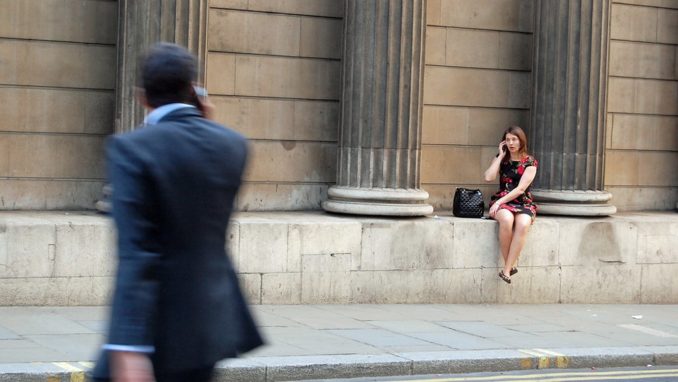
The great debate now obsessing Treasury bosses and central bankers is whether all those trillions they continue to print so obsessively are at last producing a perceptible bout of hyperinflation. Before trying to make sense of that question let’s revisit some basics.
1 – What is inflation?
Although “inflation” usually manifests as a rise in the general price level, that’s shorthand for its correct title, which is “inflation of the money supply”. A rise in the general price level could equally reflect a shrinkage in the availability of certain important supplies of goods or services – but that price rise is not due to “inflation”. However, a massive expansion in the amount of money in circulation, while the quantity of goods and services remains relatively static, will cause their prices to rise. In common parlance we might say that “monetary inflation” has led to “price inflation”.
2 – Measuring inflation – the money supply
Equally relevant is the measurement process itself. As it happens, measurement of the money supply is less problematic than measurement of price levels. The basic “M1” definition is composed of physical currency and coin, demand deposits, travellers’ checks and other deposit accounts that can be drawn down at will, such as “cash ISAs”.
3 – Measuring changes in price levels
By contrast, this becomes a political minefield whenever government is wedded to its absurd manifesto promise to keep prices of goods and services at a level that consumers can afford. (I say “absurd” because it presupposes that government can control prices in a market economy.)
4 – The usual measure
Statisticians employed by government measure price level changes by using the Consumer Prices Index (CPI). Because government pins so much of its voter-approval strategy on an ability to keep prices down, it has a vested interest in demonstrating that its comfort zone – an “inflation target” of 2 percent – is not breached, no matter what! They never point out, however, that (i) if they achieved their aim, after 36 years the pound would be worth 50p; (ii) the CPI target is symmetrical, meaning that inflation of 3pc is just as bad as inflation of 1pc; or (iii) a target of 0pc inflation is avoided because it’s too close to their arch-demon: deflation – or falling prices.
5 – CPI manipulation
The CPI itself is eminently susceptible to manipulation.
- For starters, it is a “weighted” index of household items, food and clothing and therefore prone to be “weight-adjusted” (skewed) to give the result most sought. By focusing on individual price changes it’s easy to camouflage the big picture: if they find an excuse to strip out the prices of everything that’s going up, underlying inflation will always appear low.
- Its contents are highly selective (read distortion-prone) and by no stretch can it be thought of as a “cost of living” index. For example, it excludes all housing costs – mortgage interest, council taxes, bin-collection levies, road fund tax, house insurance premiums, fuel duty, and so on – all of which could therefore be doubled without affecting the index that the state uses to measure “inflation”. (If a government statistician were ever to greet me with “Good Morning”, I would look at my watch!)
6 – USA indices
Consumers in the USA have the same problem of untrustworthy price indices – which is why those interested in more objective reporting prefer to use an index such as ShadowStats, which shows that the CPI index consistently understates the real rate of inflation by an average of 8pc, year after year.
7 – Your own experience
Perhaps the most reliable index is the internal personal one that reflects your own experience of what your money can buy. For example, I have a fair idea of the average cost of our weekly family shopping expedition; or the cost of a family dinner at a local restaurant; or the price of a half-decent bottle of Chilean Chardonnay – and can compare these mentally with last year’s equivalent. It’s not mathematically objective, but at gut-level it’s far more informative than any official price index. And that is really the point: when our own subjective perception tells us that our currency is no longer a safe store, it’s only a matter of time before those with whom we do business will nominate a preferred settlement currency.
8 – Are current shocks merely transitory?
The Bank of England’s Monetary Policy Committee is decidedly jumpy about higher CPI readings in recent weeks but argue that these are attributable to “transitory” factors like temporary supply glitches or global energy price rebounds post-Covid. They can believe their own story if they wish, but credibility will not be restored until they acknowledge the real inflationary impact of flooding City institutions with tranche after tranche of free “emergency” money, counterfeited at will, carrying virtually no interest cost. Even now, they have voted to add still more “stimulus” by completing the £150 billion purchase of gilts under its QE policy.
9 – What is hyperinflation?
Some may question the reference to “hyperinflation” in my opening paragraph. This term usually connotes wheelbarrow-loads of worthless paper money being exchanged for a loaf of bread. But my preferred description is that a currency has been hyperinflated when the state can no longer meet the borrowing costs on the debt it created by printing bonds – except by printing still more of them: the vicious circle has been closed and there’s nowhere else to go. That is what happened (or is happening) in Venezuela, Zimbabwe, Chile, Cuba, Weimar, Ethiopia, Hungary, Greece, Argentina, Liberia, Sudan, Uganda, Iran, Haiti and at least two dozen other countries whose vast wealth was stolen by autocratic tyrants in the guise of liberators – but who knew precisely nothing about money!
10 – Quantitative Easing
QE, or money-printing, is invariably justified on the assumption that (i) it will “stimulate” the sluggish economy (a slice of Keynesian dogma that never works); (ii) the practice will be terminated when the crisis is over and the specially printed debt redeemed (which has never happened). But it is such an easy option for any state in need of emergency funds that soon it is the only game in town – particularly as its practitioners in the Treasury and the Bank habitually suppress the natural level of interest to avoid penalising themselves.
11 – What is “interest”?
Academic economists in the Treasury persist in believing the lie that interest is simply the cost of money determined by central bank decree without market interference. They are ignorant of its true meaning as a factor of “time-preference”: the more urgently a borrower needs a loan, the higher is his time preference. But the longer the loan is outstanding the greater is the lender’s risk that the borrower will default, which is why banks are so reluctant to lend to business customers when interest rate compensation is negligible. Interest therefore arises dynamically at the point of interaction between their respective needs and circumstances. This natural process is reflected collectively as a market rate.
12 – But what if it rises?
Interest rate suppression is only a temporary stopgap and the Bank of England, like King Canute, will be powerless to halt the tide forever. When interest rates rise by a single percentage point (as they will) annual UK interest payments will rise by £21 billion – where will Sunak find that? He will not need it to recruit more nurses or police, or to “level-up” the North, or any of the PM’s latest hare-brained gestures – he’ll need it just to keep the UK solvent. It’s interest on the debt created by unbridled QE, and its time-preference will be “high”!
13 – The QE effect
- Bypassing the natural determination of interest rates, and instead supplanting a politically contrived zero-bound “Bank” rate, causes QE to destroy the human instinct to save money to meet unforeseeable circumstances, and punishes pensioners and others who rely on a return on their savings;
- The newly-printed bills are “monetised” when their initial recipients spend them – invariably on assets such as high-end real estate, newly launched public share offerings, yachts, fancy sports cars, private jets, quoted shares, precious commodities, football teams – even successful businesses – inflating the prices of these favoured assets;
- The inescapable effect of all that new money circulating in the real economy will be inflated prices of ordinary household purchases. Thus the unavoidable wealth-transfer effect will be completed whereby ordinary citizens must bear the cost of all that richesses squandered by the first receivers;
- In case you hadn’t noticed, you now have a rational explanation for the inequality that causes so much anguish in every society ruled by a central bank.
14 – So, who needs a central bank?
Since real interest rates emerge quite naturally from time-preferences in business transactions, who needs a central bank? Answer: a government spinelessly addicted to the fantasy that economic chastity can be restored with the aid of a printing press.
© Emile Woolf July 2021 (website)
The Goodnight Vienna Audio file



